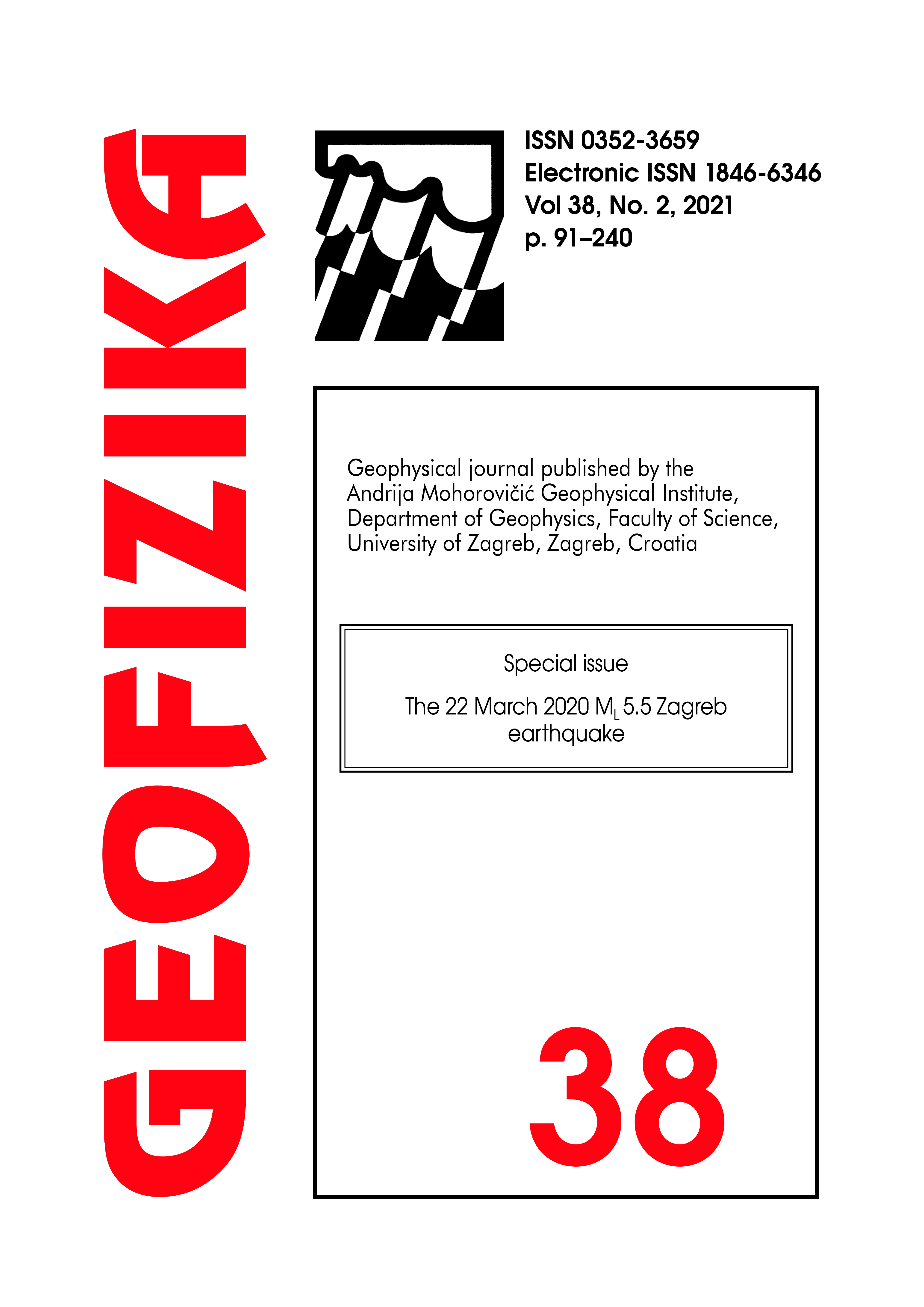Calibration of shaking intensity models of the “Extremum” system to simulate loss due to the 2020 Croatia earthquakes
DOI:
https://doi.org/10.15233/gfz.2021.38.8Keywords:
macroseismic field modelling, earthquake loss, near real time estimates, earthquakes, Croatia, “Extremum” loss simulation systemAbstract
This paper is devoted to applications of the “Extremum” loss simulation system to two damaging earthquakes which occurred in Croatia in 2020. We provide a calibration procedure of mathematical models used for shaking intensity simulation. The regional macroseismic field parameters, such as the coefficients in the macroseismic field equation; the ratio between the longer (b) and the shorter (a) axes of the higher elliptical isoseismals (the flattening ratio k); the angle that specifies the orientation of the macroseismic field, in particular, the azimuth of the longer axis in the isoseismal ellipse, were all based on extensive macroseismic data acquired for the Balkan region and on the data for an analogous area with similar seismotectonic parameters in the Caucasus. We obtained a fairly good consistency between the results of simulation applied to the impact of the 2020 Croatia earthquakes and observations, confirming that the calibration of the macroseismic model by the Extremum system was both reasonable and effective for enhancing reliability for real time loss estimation.
Downloads
Published
Issue
Section
License

This work is licensed under a Creative Commons Attribution-NonCommercial 4.0 International License.

